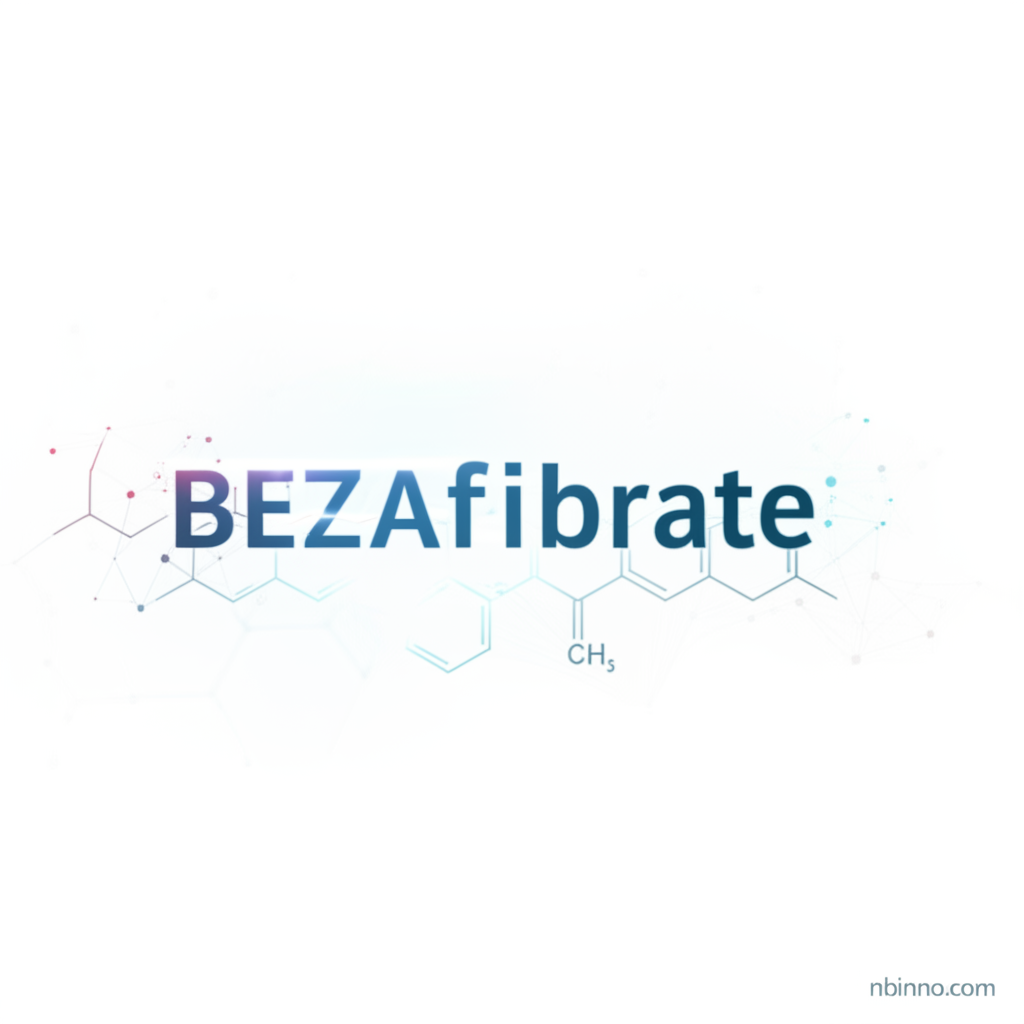Bezafibrate: A Comprehensive Guide to its Mechanism, Applications, and Benefits in Lipid Management
Discover the power of Bezafibrate, a unique pan-PPAR agonist that offers comprehensive lipid control and cardiovascular protection. Learn how it addresses hypertriglyceridemia, hypercholesterolemia, and metabolic syndrome, making it a valuable asset in modern healthcare strategies.
Get a Quote & SampleProduct Core Value

Bezafibrate
Bezafibrate is a highly effective lipid-lowering agent known for its distinct mechanism of action. As a pan-PPAR agonist, it activates all three peroxisome proliferator-activated receptors (PPAR-α, PPAR-γ, and PPAR-δ) simultaneously. This broad activation contributes to its comprehensive benefits in managing dyslipidemia, including significant reductions in triglycerides and improvements in HDL cholesterol. We, as a reliable supplier in China, are committed to providing high-quality Bezafibrate that adheres to stringent international standards.
- Understanding the mechanism of Bezafibrate reveals its potent impact on lipid metabolism pathways.
- As a key component in lipid-lowering drug therapy, Bezafibrate offers a dual approach to cardiovascular health.
- The drug contributes to cardiovascular risk reduction with Bezafibrate through its pleiotropic effects.
- It plays a crucial role in the effective management of metabolic syndrome by addressing multiple metabolic derangements.
Advantages Offered by Bezafibrate
Comprehensive Lipid Control
Bezafibrate's pan-PPAR activation leads to superior triglyceride reduction and HDL-C elevation compared to selective agonists, offering enhanced dyslipidemia management.
Improved Insulin Sensitivity
By activating PPAR-γ, Bezafibrate contributes to better glucose metabolism, making it a valuable agent in the context of type 2 diabetes prevention and management.
Cardioprotective Effects
Beyond lipid modification, Bezafibrate exhibits anti-inflammatory properties and improves endothelial function, directly contributing to cardiovascular risk reduction.
Key Applications
Hypertriglyceridemia Management
Bezafibrate is a primary choice for treating elevated triglyceride levels, a key factor in atherogenic dyslipidemia.
Metabolic Syndrome Treatment
Its broad action makes it effective in addressing multiple components of the metabolic syndrome, improving overall metabolic health.
Cardiovascular Risk Reduction
The drug's impact on lipid profiles and inflammatory markers positions it as a critical tool for mitigating cardiovascular events.
Adjunct Therapy with Statins
Combining Bezafibrate with statins offers enhanced lipid control and addresses residual risk, a crucial aspect of advanced lipidology insights.
